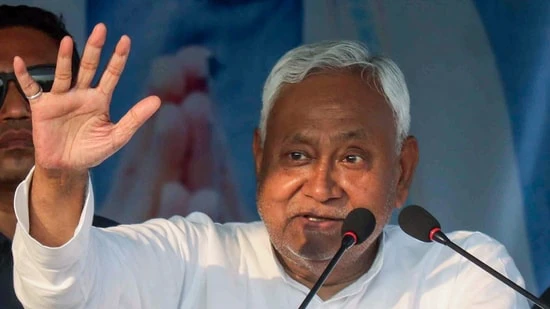What was behind the National Democratic Alliance’s (NDA) thumping victory in Bihar? Well, the Opposition thinks it was Nitish Kumar’s mega rojgar scheme for women.
The large-scale direct benefit scheme, dubbed the Mukhyamantri Mahila Rojgar Yojana (MMRY), credited ₹10,000 each to over 1 crore women just days before the Election Commission announced the polling dates for the 243-member assembly. At least ₹14,000 crore was disbursed thus.
The Opposition’s anger has only grown since Friday, when the NDA swept the 2025 election. The BJP bagged 89 seats and the JD(U) secured 85, leaving the Mahagathbandhan of INDIA bloc with just 35 seats.
Opposition leaders now say Nitish Kumar’s last-minute welfare push shaped voter behaviour.
NCP(SP) chief Sharad Pawar, a veteran from the INDIA bloc’s side of the political spectrum, said on Saturday that the scheme “generated a favourable effect for NDA”, citing a similar pattern during the Maharashtra elections. He asked why the EC allowed distribution of scheme funds “during Bihar polls”, reported news agency PTI.
According to poll panel data, women’s turnout in Bihar was 71.78%, significantly higher than men’s 62.98%, which is being seen as a major factor boosting Nitish Kumar’s pro-women image in general.
What the scheme is, when was money transferred
The Bihar cabinet cleared the MMRY scheme on August 29. The government said the scheme aimed to boost women’s entrepreneurship by offering up to ₹2.1 lakh in phased assistance for small businesses such as tailoring, retail kiosks, beauty parlours or dairy units.
Under the scheme, 14.1 million or 1.4 crore women received ₹10,000 each before polling.
Prime Minister Narendra Modi formally launched MMRY on September 26. On October 6, the ECI announced the election schedule, this is where the Opposition is smelling a rat.
Opposition parties allege that one instalment was released on the very day elections were announced, and note that state-funded advertisements in October highlighted upcoming payment dates of November.
Reflecting after the results, Mukesh Sahani of VIP from the Mahagathbandhan, whose party drew a blank, argued that “our mothers and sisters who live in poverty felt that the money would change their lives”.
“Naturally, they voted for that promise,” he said, calling the scheme “a clear case of the government using state money as a campaign lever”.
What the model code of conduct says
The poll code of conduct bars governments from announcing new financial grants or using public funds in ways that may influence voters from the moment elections are declared.
The guidelines state that the party in power “shall not use its official position for the purposes of its election campaign” and cannot issue fresh financial promises or disbursements once the code is active.
Opposition parties argue that continuing MMRY payments after October 6 constituted a breach of the code.
Why EC did not intervene
The ECI has not issued any formal clarification so far. Officials have maintained informally that schemes approved and notified before the MCC cannot be halted unless a new benefit is announced or expanded, a distinction the commission has made in other states.
However, leaders like Congress’s Ashok Gehlot said the commission simply looked away. “They were in cahoots with the ruling party,” he alleged on Friday, adding that the ECI remained a “mute spectator” while “payments of ₹10,000 to women were continuing even when the election campaign was on”.
But this has not been the case with the poll body always; it has strictly intervened in the past. According to a Hindustan Times article, in 2024, the ECI stopped the Andhra Pradesh government from disbursing ₹14,165 crore under six direct benefit transfer schemes days before voting.
The commission held that although funds were released earlier, the timing of the transfer, May 10 and 11, just before polling, could influence voters.
Another report in The Hindu said that in Tamil Nadu, the poll authorities have twice in the past two decades taken strong action against ongoing welfare schemes – one was meant for farmers and the second involved the distribution of free television sets. Both schemes were already under implementation before the election schedule was announced, the report said.
